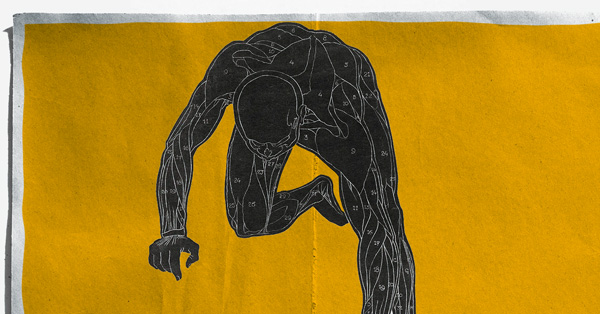
The only thing that will keep you from your fitness goals more than a lack of motivation? Injury.
Brad is a university lecturer with a master’s degree in Kinesiology and is a Certified Strength and Conditioning Specialist (CSCS) with the National Strength and Conditioning Association (NSCA). He has competed as a drug-free bodybuilder, is a cancer survivor, and a 21 year veteran of the Air National Guard. Brad has been a Primer contributor since 2011.
Some muscle-building exercises are like eggs. One day they’re the pinnacle of health and progress, but then the next day they become the scourge of humankind relegated to the trash heap of all that is wrong with society.
A bit harsh? Well, maybe, but you get the idea.
There are plenty of exercises that can easily fit into this category but one in particular takes the cake. I’m talking about the granddaddy of all infamous exercises, the squat.
If you consume any content on the net, talk to the local gym rat, or consult a personal trainer you’re bound to get a spectrum of opinions about if the squat is a good or bad thing. You’ll get an earful if it really does hurt your back, kill your knees, and if it could possibly be one of the most overrated exercises ever.
Let’s take a look at the good, the bad, and the ugly of the squat and make heads or tails of this age-old argument.
What is the squat good for?
When we think of functional exercises we often have visions of someone standing on an exercise ball with one leg while pressing a kettlebell. The squat rarely makes it into that category. It’s normally reserved as either a bodybuilding, weightlifting, or powerlifting exercise performed in the controlled confines of a traditional gym.
That couldn’t be further from the truth. As one of the most functional exercises around, the squat carries a lot of benefits directly and indirectly to everyday life.
Strengthens the entire body
In addition to the squat strengthening and building your legs, it also impacts your body as a whole. Through stabilization and balance your upper body, namely your back, shoulders, and core, are activated to provide a steady foundation. This translates to improved spine health, a stronger posterior chain (specifically hamstrings, glutes, and lumbar), and body awareness. This will not only build muscle, it will also serve you in performing regular tasks in life as well.
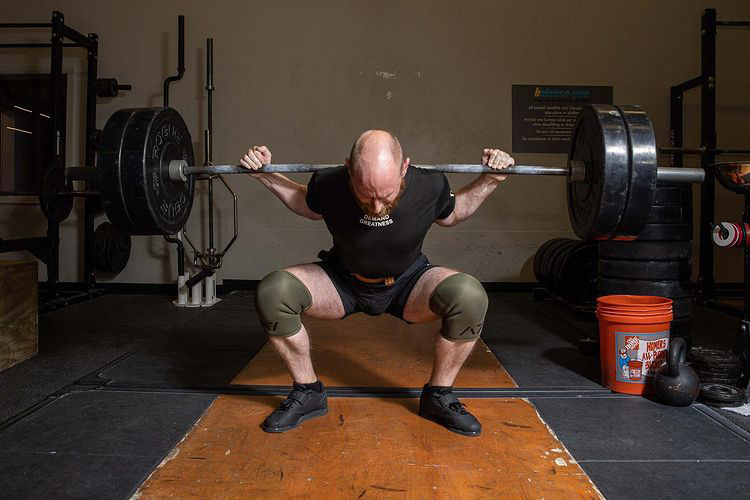
Strengthens core
As touched on above, your core will be challenged in new ways that no crunch can match. By properly bracing your core and controlling your breathing during the squat, you engage your abdominal muscles as well as supporting areas such as your lower back and activating your diaphragm. The squat can be just as much a breathing exercise as it is a muscle-builder.
Reduces injury
Many lifters will retell old war stories about their run-in with the squat. They’ll swell with pride and tell of how it caused so many injuries or how they’re too old to do them. Truth be told, in many cases, the squat wasn’t the culprit. Everything from incorrect stance and poor form to lack of mobility and ego lifting (too much weight) can contribute to injury. Surprisingly, the squat can benefit you in so many ways beyond more muscle tissue. It strengthens the knees, ankles, and hips, it builds the glutes, which can improve overall posture and athleticism, and it burns a ton of calories.
Boosts calorie burning
Speaking of calorie burn, the squat is an excellent tool for leaning up. Think of it this way: you load up a barbell on your back, you activate almost every single muscle in your body under intense stress, and then begin to push said muscles all at once all the while maintaining your form and executing textbook function. Compared to a set of leg extensions you’ll quickly see which one will literally take your breath away.
Increases athleticism
Another incredible advantage of the squat is its ability to enable you to be more athletic. When you think of the squat you may have visions of big burly guys heaving up heavy loads while huffing and puffing between sets. Yes, that may be true for powerlifters and strongmen, but the squat is similar in many ways to any other exercise. You’re able to adjust the weight, rep range, volume, rest periods, and many other factors to influence its effectiveness and fit any athletic endeavors.
Can be done anywhere
The beauty of the squat is that you’re not limited to the traditional gym environment. If you have even the smallest place to exercise, you’re able to make the squat work for you. No weights? No problem. Bodyweight squats are just as great. You can easily make them more challenging by performing half reps in between full reps, slow down each phase of the rep by going down for a count of five or 10 and back up the same way, or simply perform higher rep sets of 50 or so. The point is that the squat requires no special equipment.
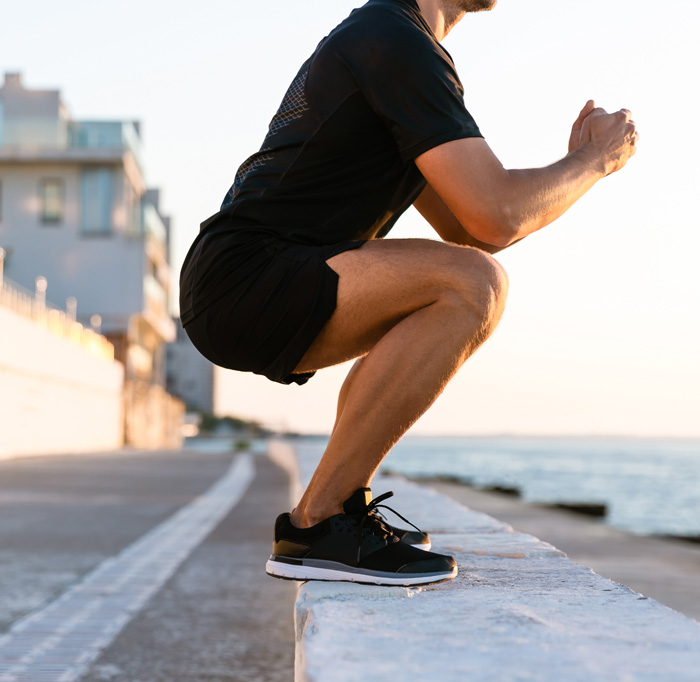
Why does the squat get a bad rap?
The short answer is that many lifters perform them incorrectly. Now, this excludes those who have serious back issues, knee injuries, or anything else out of their control. Here, I’m speaking to those lifters who have overheard or read about the negative press the squat has gotten over the years.
Additionally, with that said there are those who just don’t like doing them. Squats are demanding, challenging, and require serious focus and effort in order to be effective. Many don’t give their lower bodies the attention it needs, instead focusing on the upper body’s “show-y” muscles. Why train something so hard when you can easily put on a pair of pants to cover them up?
Bad execution equals bad press.
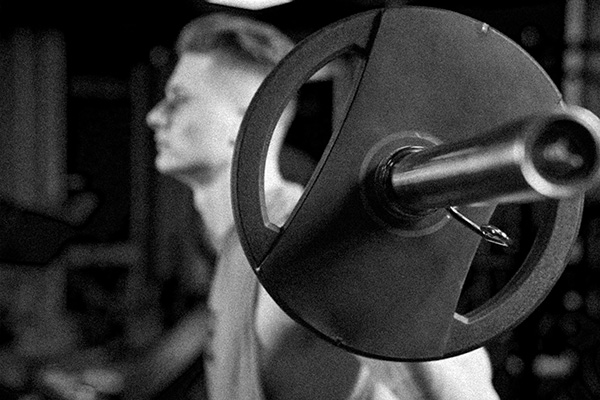
Can tall guys squat?
It’s been believed that tall guys can’t squat as effectively as shorter guys. That because of height, taller lifters are unable to properly execute good form and tend to bend over further, have a more difficult range of motion, and are unable to utilize any significant amounts of weight in order to elicit real gains in muscle and strength.
The taller lifter is no different than any other lifter. In order for anyone to squat correctly and get as much out of it as possible, you’ll need to find the right form that fits your body type. Short, tall, wide, or narrow. No matter your structure, the key is finding your own unique groove.
How to make the squat work for you
Here are some key tips on how to squat properly and some of the more common mistakes many lifters make.
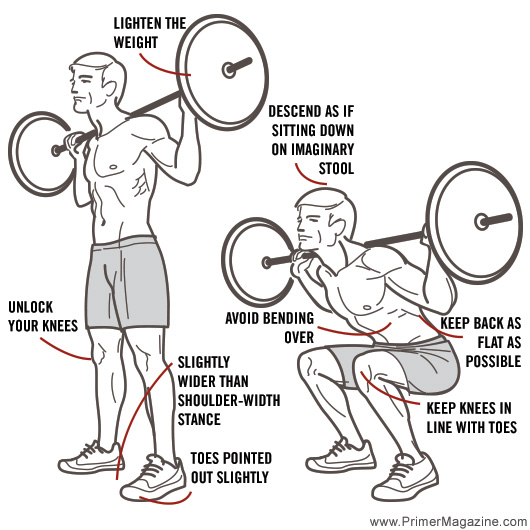
- Moderate weight. Load the bar with a moderate amount of weight. Choose a weight that has you performing in the rep range of 10 to 15. This will ensure that you’re able to execute proper form without worrying too much about load. More reps also gives you more of an opportunity to practice better form.
- Choose your stance. Use a stance slightly wider than shoulder width with your toes pointed slightly out a few degrees. This will give you a good foundation from the start.
- Stay aligned. With a deep inhale, descend by bringing your hips back and keeping your spine aligned. You will bend forward slightly, but be sure to brace your core for the entire lift. It’s also critical that you keep your knees inline with your feet. Avoid allowing your knees to cave in or out.
- Go for depth. For depth, go down as far as you can until your hamstrings come in contact with your calves or until you start to roll your pelvis forward and bend the spine.
- Avoid lockout. Reverse the direction as you exhale on the way up. At the top of the movement avoid locking your knees and immediately begin the next rep.
Here are a few common mistakes many make and could possibly be the culprit of your lack of success with the squat.
Too much weight. Heavier loads force us to compensate for our form and open us up for injury. Don’t fall into the trap of ego lifting.
Knee valgus. This term refers to when our knees begin to cave in as we lift the weight. It’s a sign of weak abductors or could be the use of too much weight. If you have a tendency of doing this, strap a single band around both knees that has you actively resisting to separate your knees during the lift. This will help with remaining aware of valgus and strengthening that weak area.
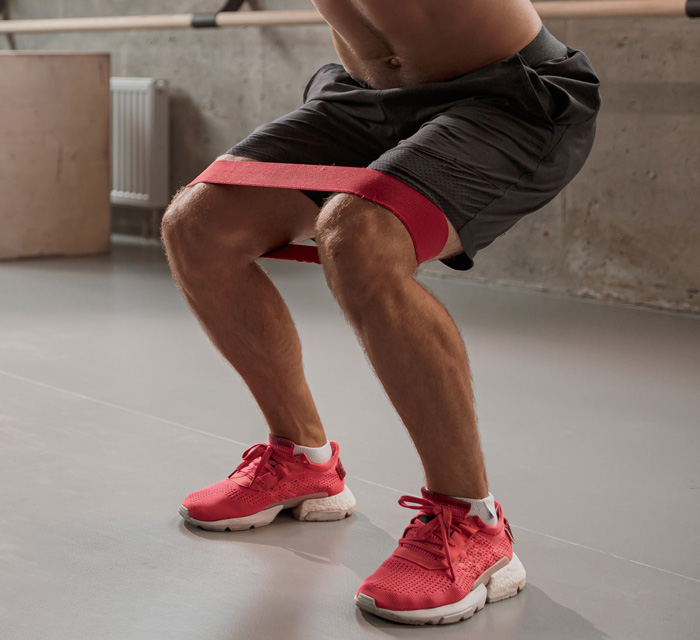
Range of motion issues. For many lifters, a limited range of motion boils down to using too much weight and fear of damaging an ego. If you have a serious range of motion issue, start over. Perform simple bodyweight squats while using a full range of motion for several sets. Next, use an empty bar and perfect your form. Finally, add a small amount of weight each session while executing this new perfected form. You will eventually reach a point where you’ll start using a significant amount of weight with your newfound form and function.
Other range of motion issues. If you find yourself still suffering from a limited range of motion, you may have some structural issues that need addressing. Tight glutes, achilles tendons/calves, and lack of hip mobility are common limitations. Be sure these areas are properly mobilized and warmed-up prior to your session. Over time you’ll open up those areas and become much more flexible, improving range of motion and making the squat a valuable addition to your training.
In closing
If you’re either thinking about ditching squats or maybe they’re a distant memory at this point in your training program, don’t give up quite yet. Invite them back into your life now that you’re wiser and have stripped away your ego. Performed properly, the squat is too good to pass up and unlike eggs, they’ll never spoil.
